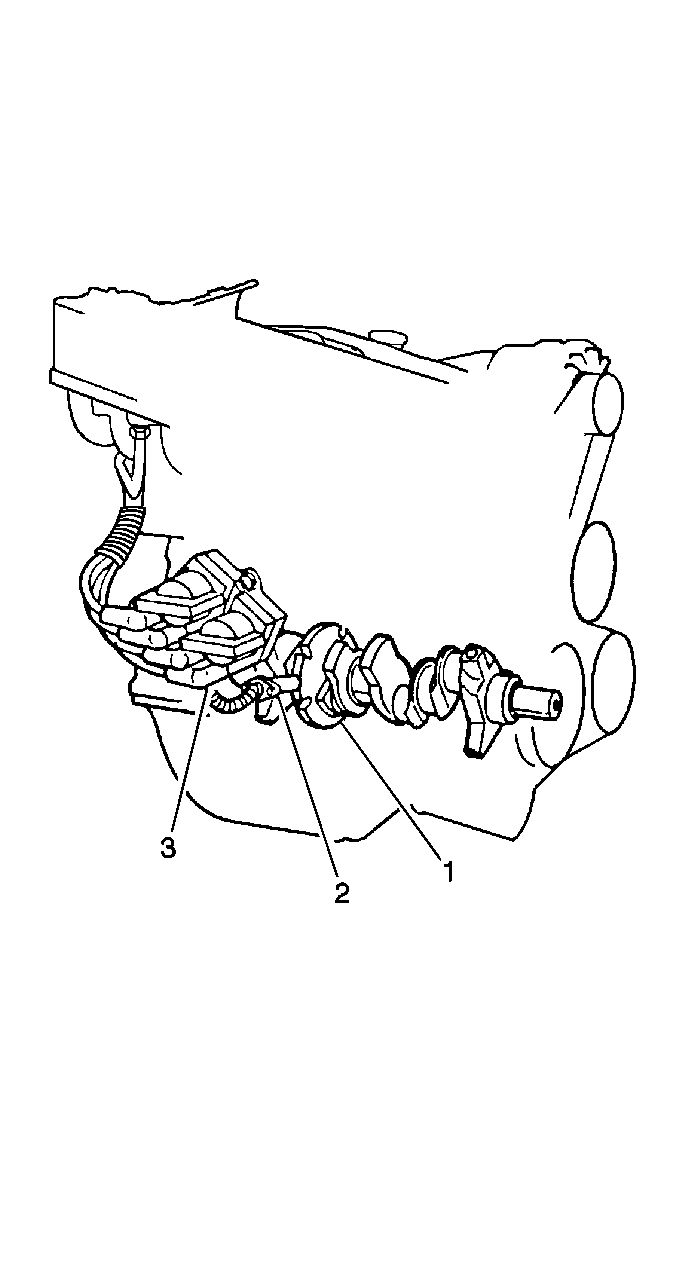System Operation
The Electronic Ignition (EI) system does not use the conventional distributor and coil. This ignition system consists of 2 separate ignition coils, an electronic Ignition Control Module (ICM) and a Crankshaft Position (CKP) sensor. The related connecting wires and the Ignition Control (IC) portion of the PCM make up the remainder of the system.
A distributorless ignition system, such as this one, uses a waste spark method of spark distribution. Each cylinder is paired with the cylinder that is opposite of it (1-4 or 2-3). The spark occurs simultaneously in the cylinder coming up on the compression stroke and in the cylinder coming up on the exhaust stroke.
The cylinder on the exhaust stroke requires very little of available energy to fire the spark plug. The cylinder on the compression stroke uses the remaining energy as required. The same process repeats when the cylinders reverse roles.
It is possible in a no load condition for one plug to fire even though the spark plug lead from the same coil is disconnected from the other spark plug. The disconnected spark plug lead acts as one plate of a capacitor, with the engine being the other plate. These two capacitor plates are charged as a current surge (spark) jumps across the gap of the connected spark plug. The plates are then discharged as the secondary energy is dissipated in a oscillating current across the gap of the spark plug still connected. Because of the direction of the current flow in the primary winding and thus, in the secondary winding, one plug fires from the center electrode to the side electrode while the other fires from the side electrode to the center electrode.
This system utilizes the IC signal from the PCM, as does a distributor type ignition system equipped with IC, in order to control spark timing. In order to properly control the ignition timing, the PCM relies on the following information:
| • | The engine load (manifold pressure or vacuum) |
| • | The engine coolant temperature |
| • | The intake air temperature |
| • | The crankshaft Position. |
| • | The engine speed (RPM) |
| • | The knock sensor |
| • | The TP sensor |
System Components

The Crankshaft Position (CKP) Sensor
This system uses a magnetic CKP sensor (2), mounted remotely from the ICM (3), which protrudes into the block within approximately 0.050 inches from the crankshaft reluctor. The graphic illustrates a typical sensor in relationship to the crankshaft reluctor. The reluctor is a special wheel which is cast into the crankshaft with 7 slots machined into the wheel, 6 of which are equally spaced (60 degrees apart). A seventh slot is spaced 10 degrees from one of the other slots and serves to generate sync-pules. As the reluctor rotates as part of the crankshaft, the slots change the magnetic field of the sensor, creating an induced voltage pules. Based on the CKP sensor pules, the CKP sensor sends a 7x reference signal to the PCM which is used to indicate the crankshaft position and the engine speed. The CKP sensor continues to send these reference pulses to the PCM at a rate of seven times per 360 degrees of crankshaft revolution. This signal is called the 7x reference because the signal occurs 7 times per crankshaft revolution. The 7x reference signal is necessary in order for the PCM to determine when to energize the fuel injectors.
Ignition Coils
Two separate coils are mounted to the ignition coil assembly. Each coil provides the spark for two plugs simultaneously (waste spark distribution). Each coil can also be replaced separately.
Ignition Control Module (ICM)
The ICM receives the Ignition Control (IC) signals from the PCM which in turn triggers the corresponding ignition coils. Since the PCM controls spark timing and ignition control during crank and run, there is no bypass mode. The ICM is not repairable. When an ICM is replaced, transfer the remaining components to the new module.
